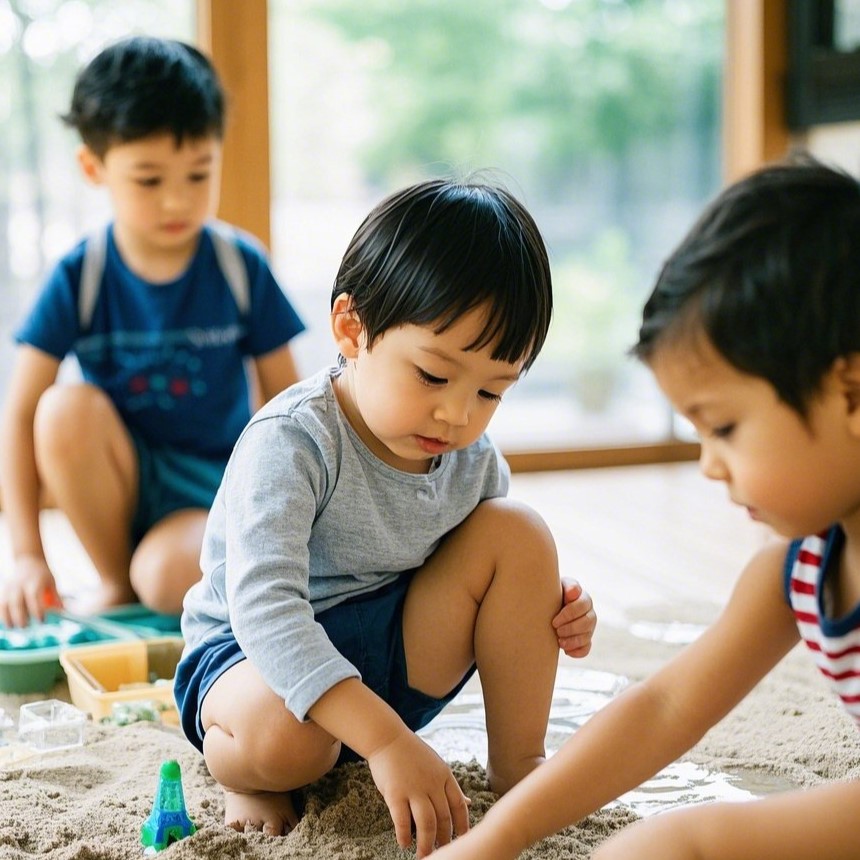In the early years of life, toddlers are constantly exploring, learning, and growing. Their brains develop at an astonishing rate, and they soak up experiences like tiny sponges. Among the most effective ways to support this rapid development is through sensory activities —hands-on experiences that stimulate sight, sound, touch, taste, and smell. These sensory play experiences not only promotenot only promote early childhood development , but they also play a critical role in helping toddlers improve focus and attention span .and attention span.
In today’s fast-paced world, where distractions are everywhere, helping young children build concentration and mindfulness is more important than ever. Sensory activities are powerful tools for teaching toddlers how to stay engaged, regulate emotions, and build cognitive skills that lay the foundation for future learning.
Below, we explore ten fun and effective sensory activities designed to boost your toddler’s focus and attention while supporting their natural curiosity and love of play.
1. Textured Treasure Hunt
One of the simplest yet most engaging sensory activities is the textured treasure hunt . Fill a large sensory bin or shallow container with dry rice, beans, pasta, or sand. Then hide small items like plastic animals, buttons, or beads inside. Provide spoons, tongs, or cups for your toddler to dig and search.
Benefits :
- Enhances fine motor skills
- Encourages problem-solving
- Promotes attention to detail
- Stimulates the tactile sense
This activity keeps toddlers engaged for extended periods as they explore textures and focus on finding each hidden “treasure.”

2. Scented Playdough Exploration
Make homemade playdough and add scents like cinnamon, lavender, lemon, or vanilla using essential oils or spices. Give your toddler tools like rolling pins, shape cutters, or plastic knives for creative manipulation.
Why it works :
- The olfactory system (sense of smell) enhances emotional regulation
- Squishing and molding dough boosts hand strength and coordination
- Scented materials create a multi-sensory experience, increasing sustained attention
Using scented playdough in toddler learning promotes mindfulness while strengthening hand muscles essential for writing in later years.
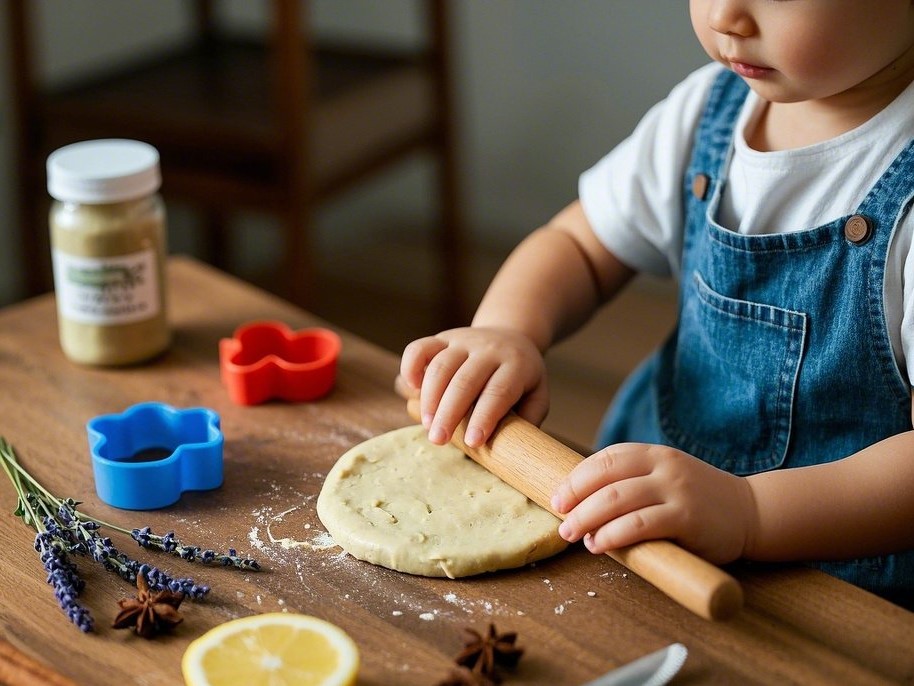
3. Water Beads Sensory Bin
Colorful water beads are tiny orbs that expand in water to create a soft, squishy texture. Toddlers love scooping, transferring, and sorting them using cups and spoons.
Developmental focus :
- Improves hand-eye coordination
- Strengthens concentration skills
- Stimulates both tactile and visual senses
Supervision is key, but water bead play is a mesmerizing and calming activity that encourages long periods of independent play.
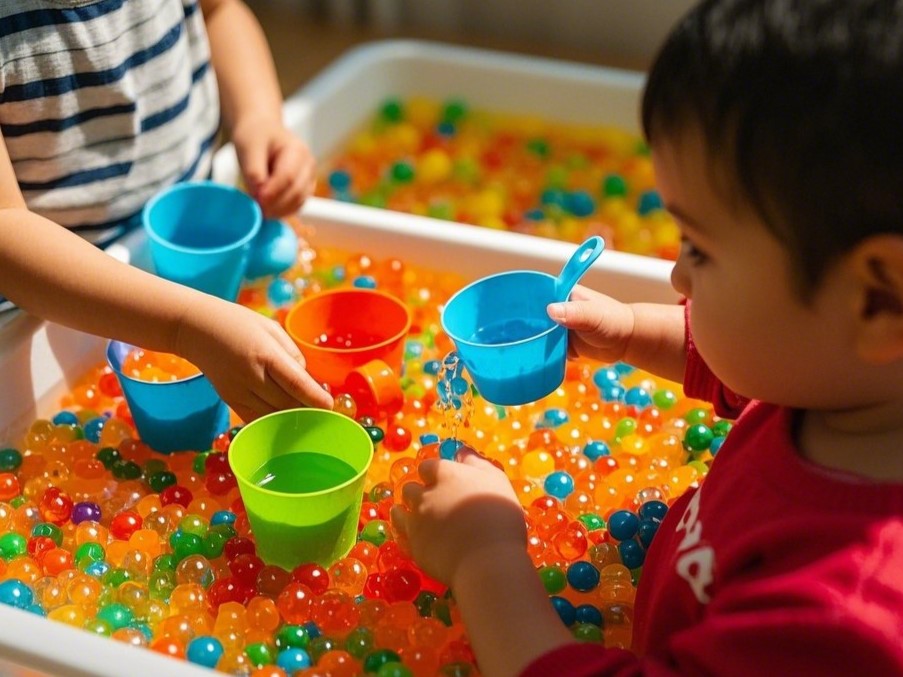
4. DIY Sensory Bottles
Sensory bottles are sealed containers filled with water, glitter, beads, sequins, and small objects. As children shake and watch the contents settle, they become naturally focused and intrigued.
Key benefits :
- Encourages visual tracking
- Reduces anxiety
- Supports emotional regulation
These calming bottles are ideal for quiet time or transitioning between activities and are great additions to any toddler’s calming corner.
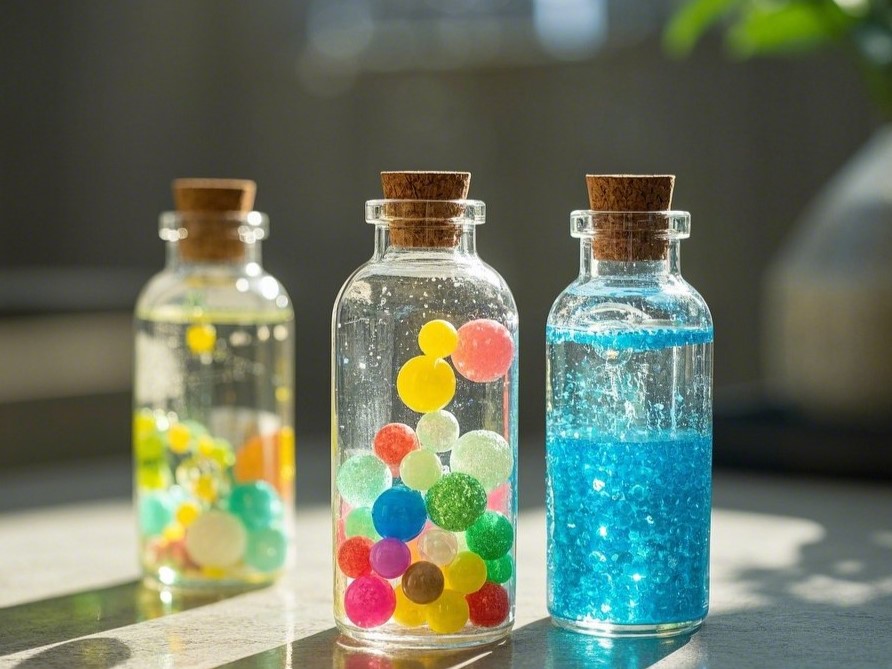
5. Sound Sorting Station
Auditory-based sensory play also helps toddlers improve focus . Create sound shakers using sealed containers filled with different materials—like rice, pasta, or bells. Encourage your child to shake, listen, and match similar sounds.
Why it’s effective :
- Promotes auditory discrimination
- Builds listening skills
- Supports early phonics awareness
This activity supports early childhood development by teaching children to attend closely to differences in sound, laying the groundwork for language development.
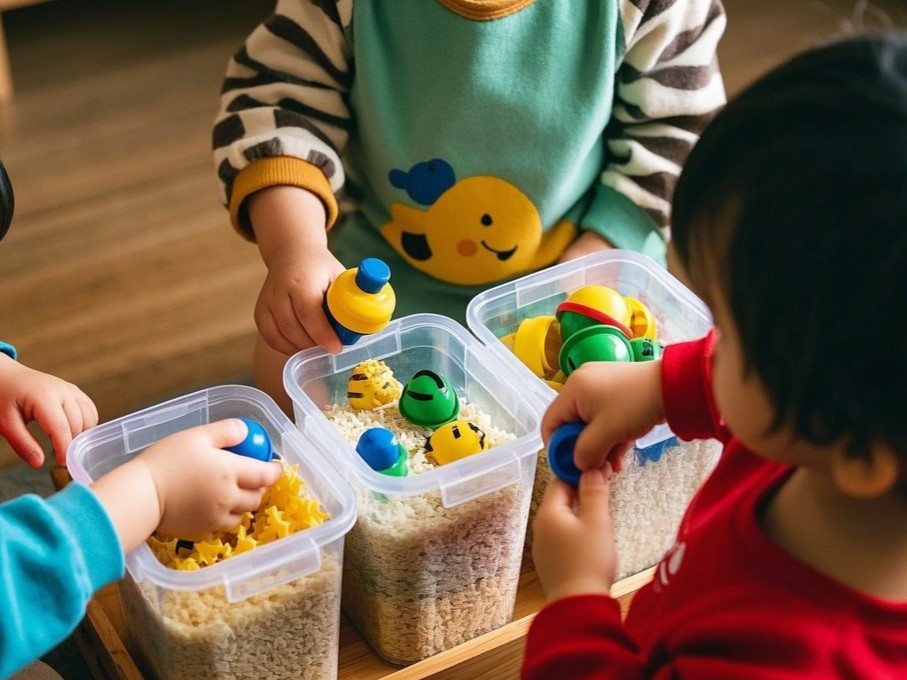
6. Nature Collage Craft
Collect natural materials like leaves, twigs, grass, and flower petals during a nature walk. Back at home, provide glue and paper and encourage your toddler to create a collage from their finds.
Learning outcomes :
- Boosts observation skills
- Encourages sensory-rich exploration
- Teaches focus through creative expression
Nature collages offer a soothing way for toddlers to reflect on their outdoor experiences while building fine motor control and artistic confidence.
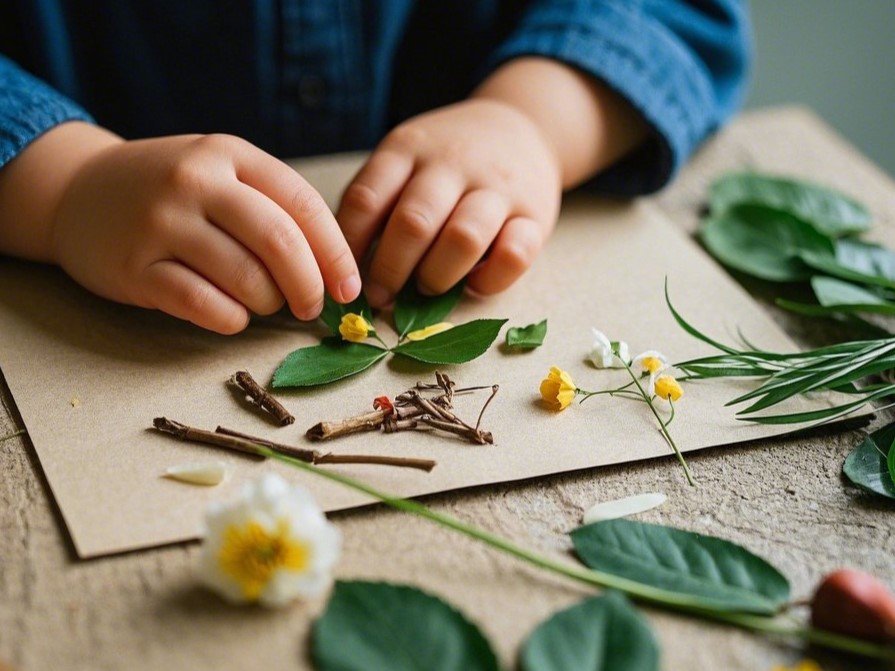
7. Frozen Toy Rescue
Freeze small toys in containers of water and give your toddler tools like spray bottles, warm water, and child-safe droppers to “rescue” the items from the ice.
Focus benefits :
- Teaches cause and effect
- Encouragement patience and persistence
- Enhances fine motor precision
This hands-on, science-based play builds critical thinking skills and keeps toddlers deeply engaged in a meaningful, goal-oriented task.
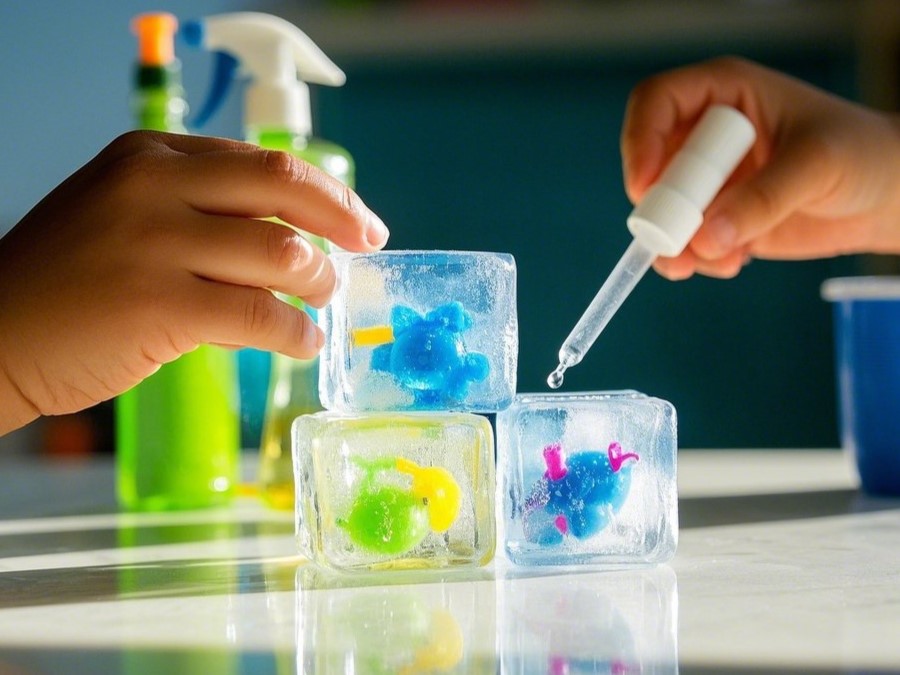
8. Mirror and Light Play
Place a baby-safe mirror at your child’s level and add objects that reflect light, like prisms, flashlight beams, or colorful translucent blocks. Let your toddler experiment with light and reflection.
Developmental gains :
- Improves visual focus
- Supports sensory integration
- Encourages exploration of spatial relationships
Light play stimulates both the visual and proprioceptive systems, helping toddlers become more aware of their bodies and surroundings.
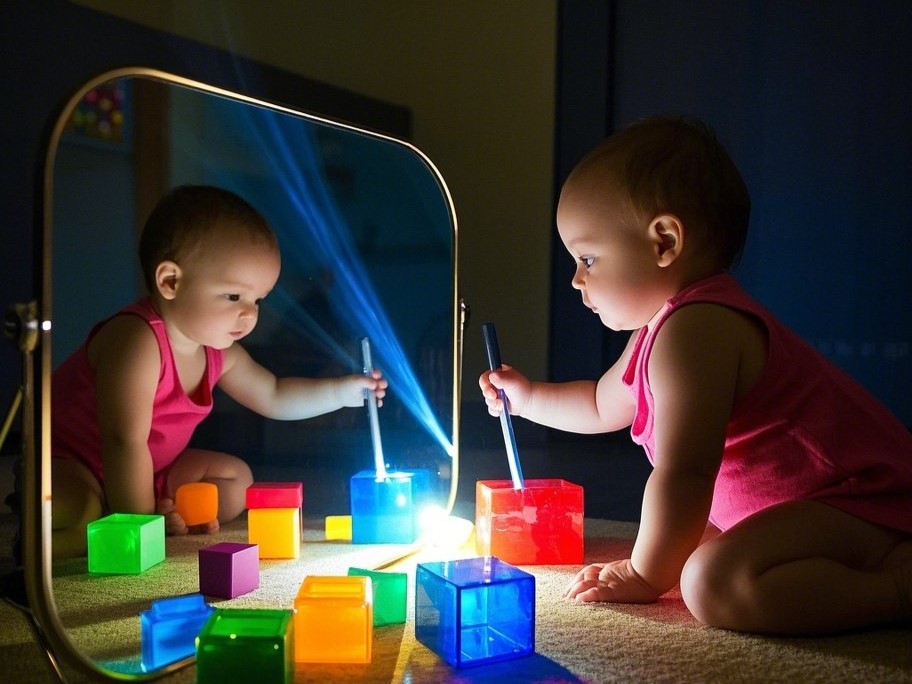
9. Mess-Free Painting Bags
Squirt blobs of paint into a sturdy ziplock bag, seal it tightly, and tape it to a window or tabletop. Let toddlers squish the paint from outside the bag to mix colors and create patterns.
Why toddlers love it :
- No cleanup
- Engaging textures and colors
- Encourages creativity without overstimulation
This activity is especially helpful for sensory-sensitive children, offering tactile input in a less overwhelming way.
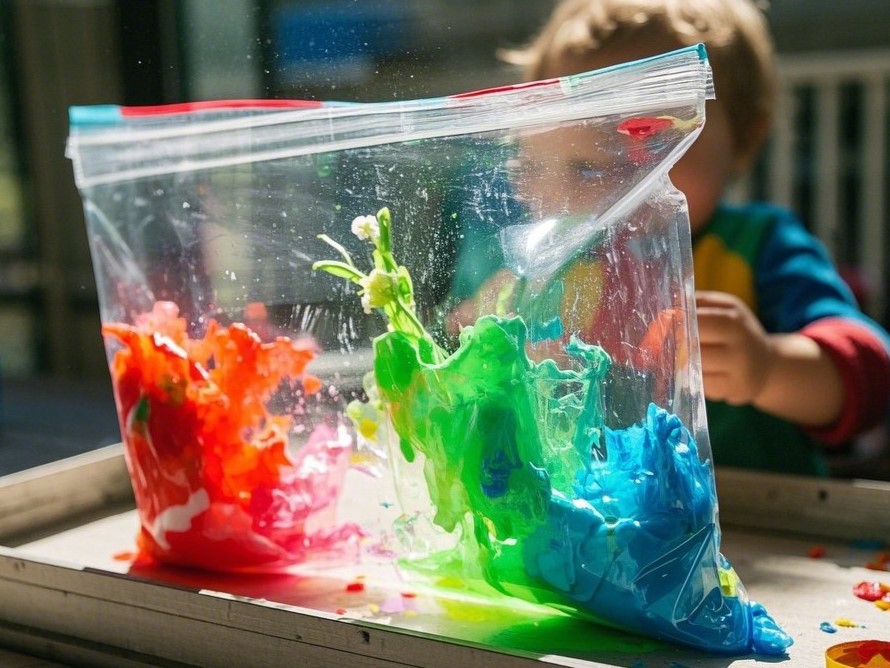
10. Fabric Texture Basket
Fill a small basket with fabric scraps in a variety of textures—fleece, silk, denim, corduroy, velvet. Allow your toddler to feel, compare, and even sort them by soft, rough, thick, or thin.
Focus points :
- Sharpens sensory awareness
- Teaches descriptive vocabulary
- Enhances cognitive flexibility
This simple activity introduces toddlers to new tactile experiences and helps build a strong sensory foundation for focused learning.
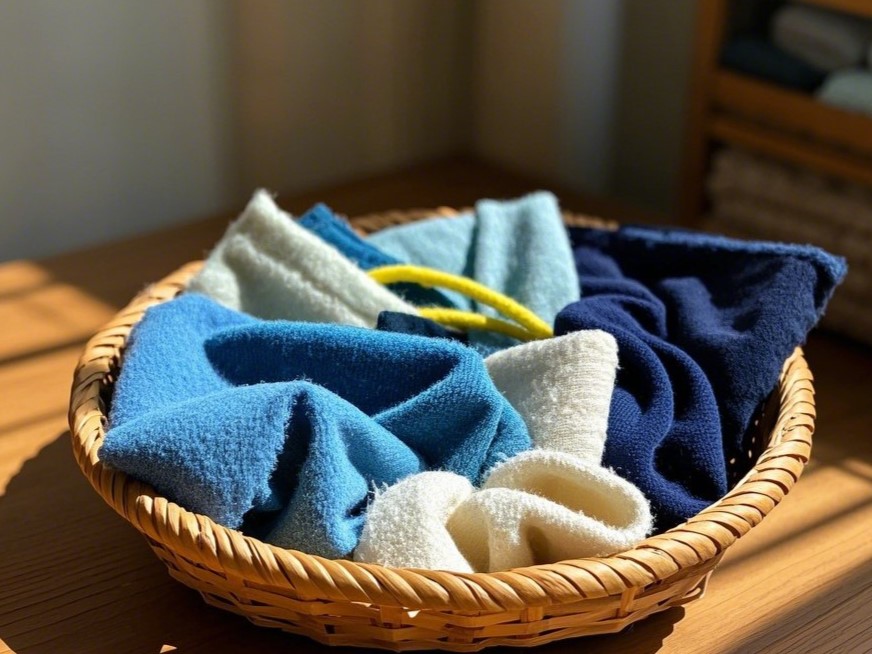
Why Sensory Activities Matter for Focus
From a developmental perspective, sensory play is essential. When toddlers interact with different materials, their brains form new neural connections. These connections enhance cognitive function , help regulate behavior, and improve the ability to focus on tasks.
Through repetition and engagement, toddlers build confidence and learn to block out distractions—an invaluable skill as they grow. Over time, these seemingly simple activities support long-term attention span, emotional resilience, and school readiness.
Tips for Success
- Follow your child’s interests : If they’re fascinated by animals, integrate animal figurines into your sensory bins.
- Keep it fresh : Rotate materials and themes to maintain curiosity.
- Create a calming environment : Limit background noise and distractions during playtime.
- Model engagement : Show excitement and join in to encourage deeper involvement.
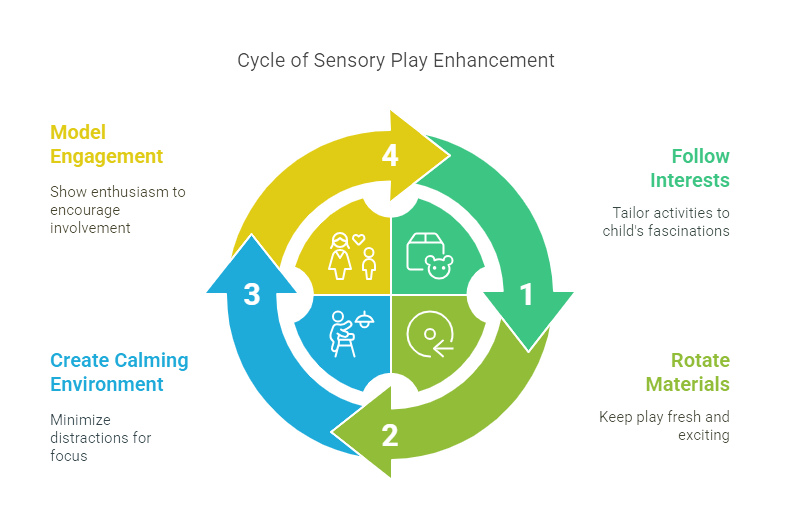
Final Thoughts
Sensory activities are more than just fun—they are strategic, brain-boosting experiences that support the whole child. By integrating sensory play into your daily routine,
In a world full of distractions, that’s a gift that never goes out of style.

